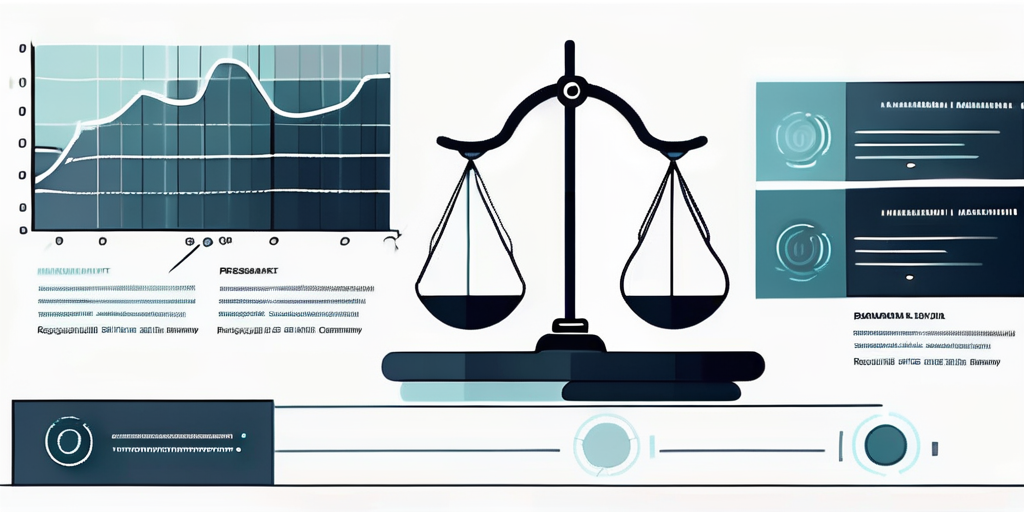Regularization is a fundamental concept in the field of machine learning and artificial intelligence. It is a technique used to prevent overfitting, a common problem in machine learning models where the model performs exceptionally well on the training data but fails to generalize well on unseen data. Regularization introduces a penalty term to the loss function to discourage the learning algorithm from fitting the training data too closely.
Overfitting occurs when a model learns the noise and errors in the training data to the extent that it negatively impacts the model’s ability to generalize. This is where regularization comes in. By adding a complexity term that increases with the complexity of the model, regularization discourages overfitting and helps to improve the model’s generalization performance.
Types of Regularization
There are several types of regularization techniques used in machine learning and artificial intelligence. Each type has its own unique characteristics and is suited to different types of problems and datasets. Understanding these different types and their applications is crucial for anyone working in the field of machine learning.
Some of the most common types of regularization include L1 regularization, L2 regularization, and dropout. Each of these techniques has its own strengths and weaknesses, and the choice of which to use often depends on the specific problem at hand.
L1 Regularization
L1 regularization, also known as Lasso regularization, adds an absolute value of magnitude of coefficient as penalty term to the loss function. This type of regularization can lead to sparse outputs, effectively reducing the number of features upon which the given solution is dependent. For this reason, L1 regularization can be a good choice for feature selection in models with a large number of features.
However, one potential downside of L1 regularization is that it can lead to model underfitting if the penalty term is too large. This can result in a model that is too simple to accurately capture the underlying patterns in the data.
L2 Regularization
L2 regularization, also known as Ridge regularization, adds a squared magnitude of coefficient as penalty term to the loss function. Unlike L1 regularization, L2 regularization does not lead to sparse outputs and does not reduce the number of features used by the model. This makes L2 regularization a good choice for models where all features are important.
One potential downside of L2 regularization is that it can lead to model overfitting if the penalty term is too small. This can result in a model that is too complex and overfits the training data.
Regularization in Neural Networks

Regularization is not only used in traditional machine learning models, but also in neural networks. In fact, regularization is a key technique for preventing overfitting in deep learning models, which are known for their high capacity and complexity.
There are several ways to apply regularization in neural networks, including weight decay, dropout, and early stopping. Each of these techniques has its own strengths and weaknesses, and the choice of which to use often depends on the specific problem at hand.
Weight Decay
Weight decay is a form of L2 regularization that discourages large weights in the model by adding a penalty term to the loss function that is proportional to the square of the magnitude of the weights. This helps to prevent overfitting by discouraging the model from relying too heavily on any one feature.
However, one potential downside of weight decay is that it can lead to model underfitting if the penalty term is too large. This can result in a model that is too simple to accurately capture the underlying patterns in the data.
Dropout
Dropout is a regularization technique that randomly sets a fraction of the input units to 0 at each update during training time, which helps to prevent overfitting. The fraction of the input units that are set to 0 is a hyperparameter that must be chosen carefully to balance the need for regularization with the need for model complexity.
One of the main advantages of dropout is that it can be applied to any type of layer in a neural network, including fully connected layers, convolutional layers, and recurrent layers. This makes dropout a very flexible and powerful regularization technique.
Choosing the Right Regularization Technique
Choosing the right regularization technique is a critical step in the process of building a machine learning model. The choice of regularization technique can have a significant impact on the model’s performance, so it’s important to understand the strengths and weaknesses of each technique and how they relate to the specific problem at hand.
Some factors to consider when choosing a regularization technique include the complexity of the model, the size and nature of the dataset, and the specific requirements of the problem. For example, if the model is very complex and prone to overfitting, a strong regularization technique like dropout might be a good choice. On the other hand, if the model is relatively simple and underfitting is a concern, a less aggressive regularization technique like weight decay might be more appropriate.
Conclusion
Regularization is a powerful tool in the machine learning toolbox, capable of preventing overfitting and improving model generalization. By understanding the different types of regularization and how to apply them, you can build more robust and effective machine learning models.
Whether you’re working with traditional machine learning models or complex neural networks, regularization is a technique that can help you achieve better results. So next time you’re building a model, don’t forget to consider regularization!



